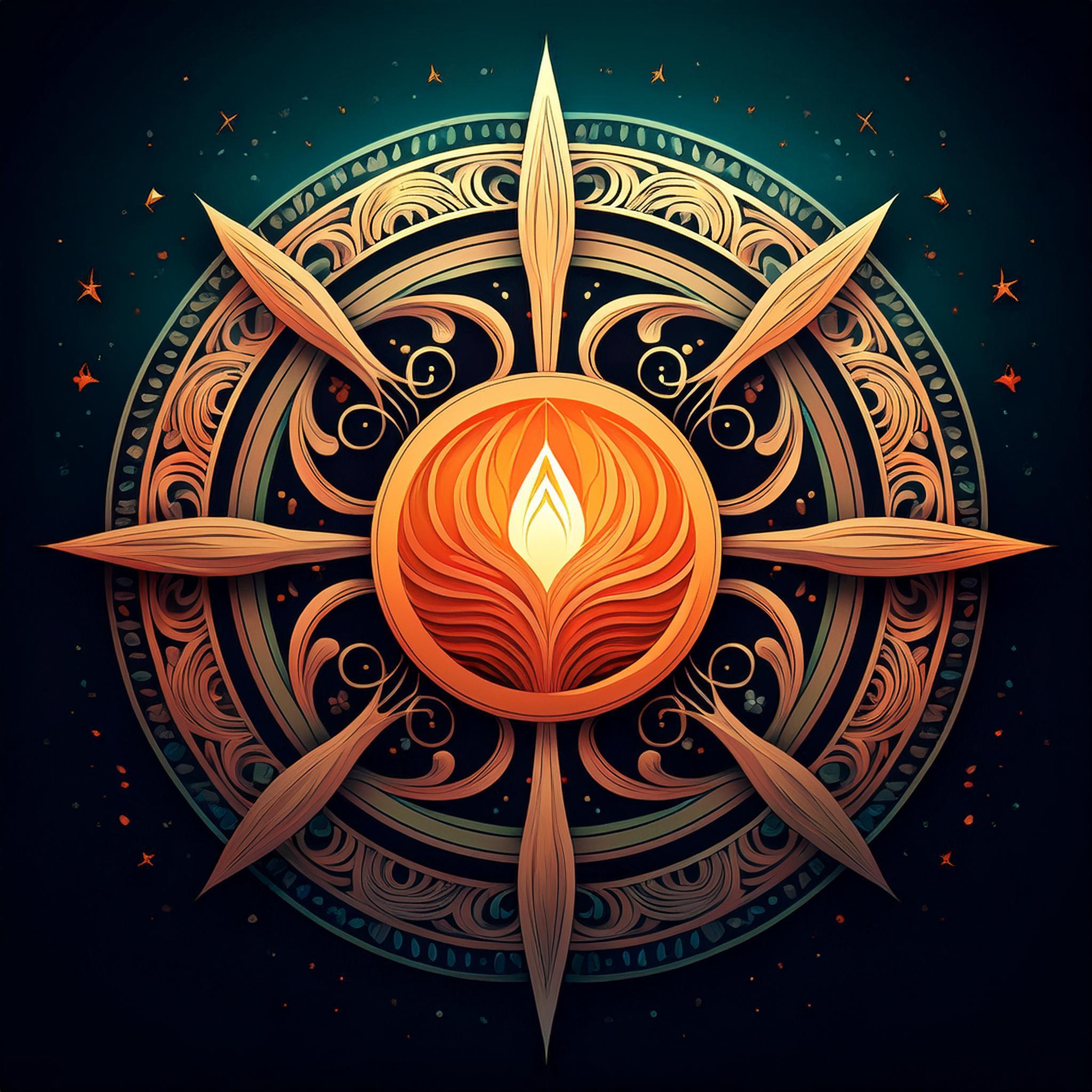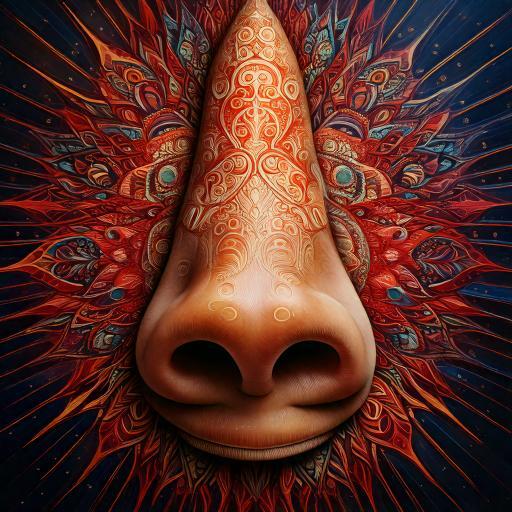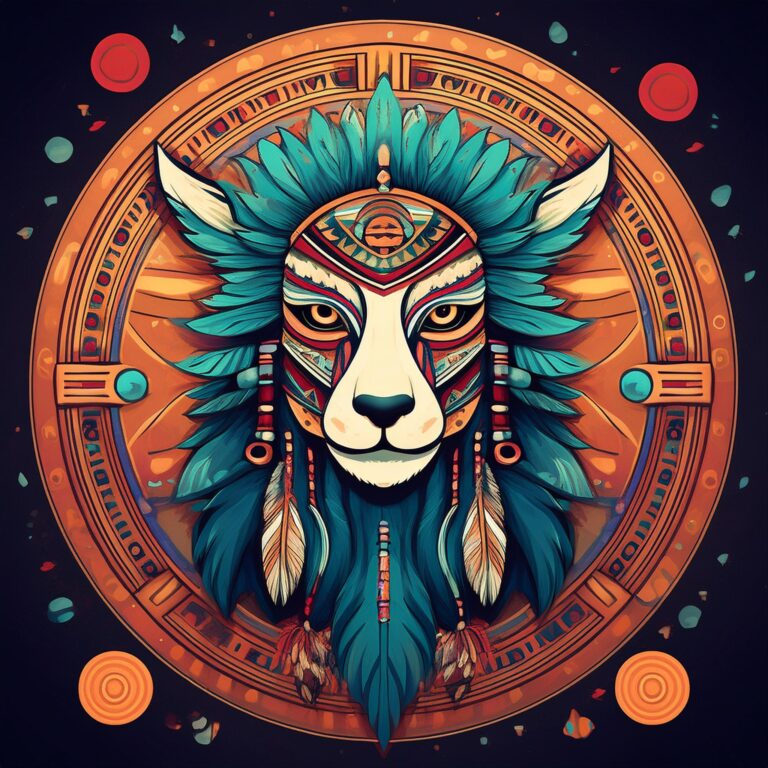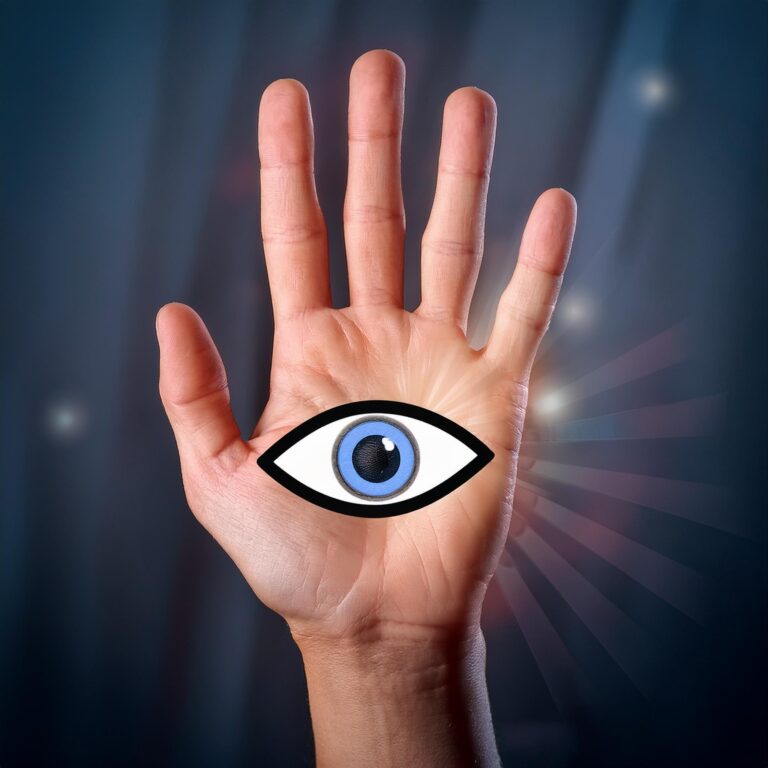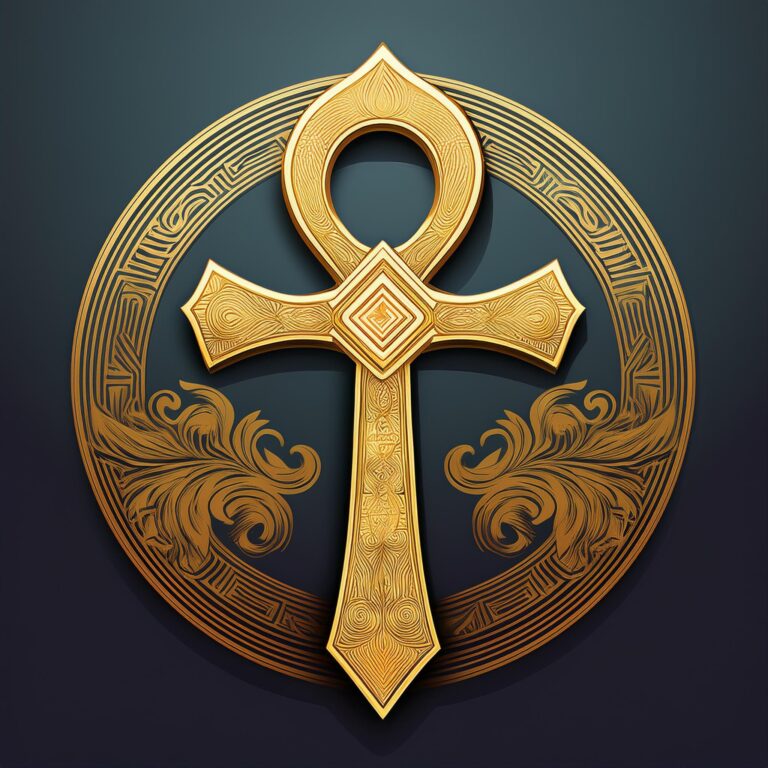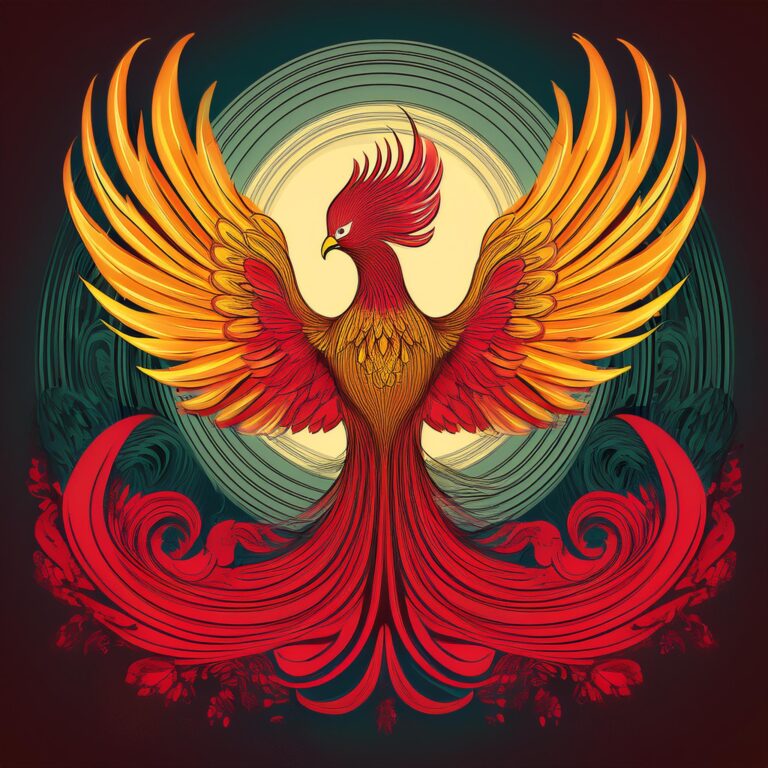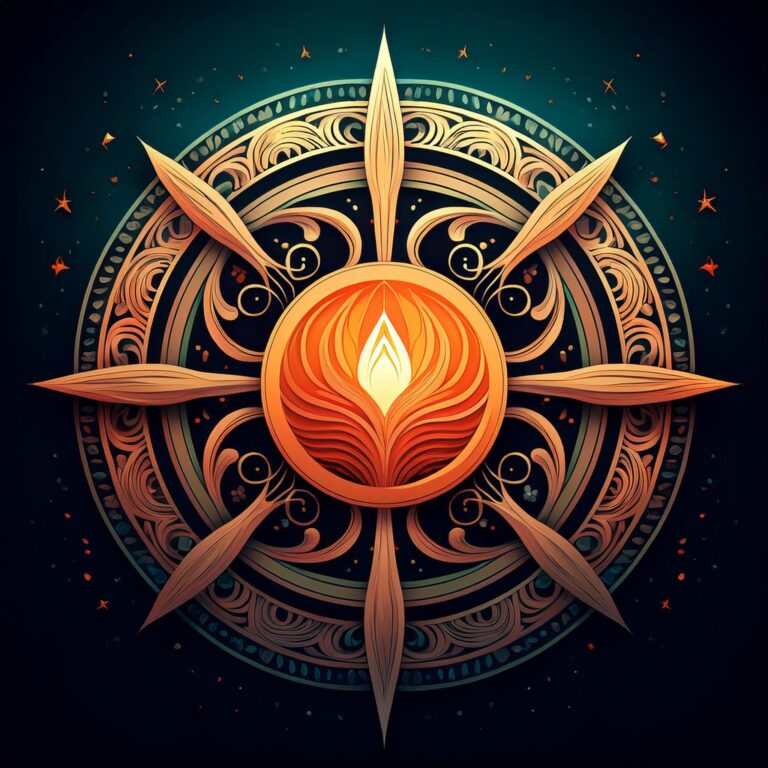Symbols have long played a pivotal role in human culture, offering a way to express complex emotions and concepts through simple, often universal, imagery. Among these, the symbol for hope is one that has evolved across different cultures, religions, and time periods. Hope, a powerful and enduring emotion, is frequently depicted through various symbols that have come to represent the strength and resilience of the human spirit.
Throughout history, different civilizations have adopted symbols to convey the idea of hope. In ancient Greece, the phoenix, a mythical bird that rises from its ashes, symbolized rebirth and the hope of renewal after destruction. This imagery resonated deeply with the idea of hope as a force that persists even in the face of despair.
In Christianity, the anchor became a symbol of hope, representing steadfastness and faith during tumultuous times. Early Christians adopted the anchor as a covert symbol of their faith, connecting it to the concept of hope as a stabilizing force amidst life’s challenges. The anchor’s ability to secure a vessel amidst a storm made it a powerful metaphor for spiritual stability and the hope that anchors the soul.
Culturally, the idea of hope has been expressed through symbols that vary widely in form and meaning. In Japanese culture, the crane is often associated with hope, peace, and longevity. The act of folding 1,000 origami cranes is believed to bring good fortune and hope to those in need of healing. This practice, known as Senbazuru, gained international recognition through the story of Sadako Sasaki, a young girl affected by the Hiroshima bombing, who endeavored to fold 1,000 cranes in the hope of recovering from leukemia.
In modern times, the ribbon has emerged as a symbol of hope, particularly in the context of social and health-related causes. The pink ribbon, for instance, is widely recognized as a symbol of hope and solidarity in the fight against breast cancer. This simple yet powerful image has united millions around the world in the shared hope for a cure.
These symbols, while diverse in origin and form, all share a common thread—they encapsulate the essence of hope as a beacon of light in times of darkness. Whether through the renewal symbolized by the phoenix, the steadfastness of the anchor, the peace embodied by the crane, or the solidarity represented by the ribbon, the symbol for hope continues to inspire and uplift across generations and cultures.
Introduction to Symbols of Hope
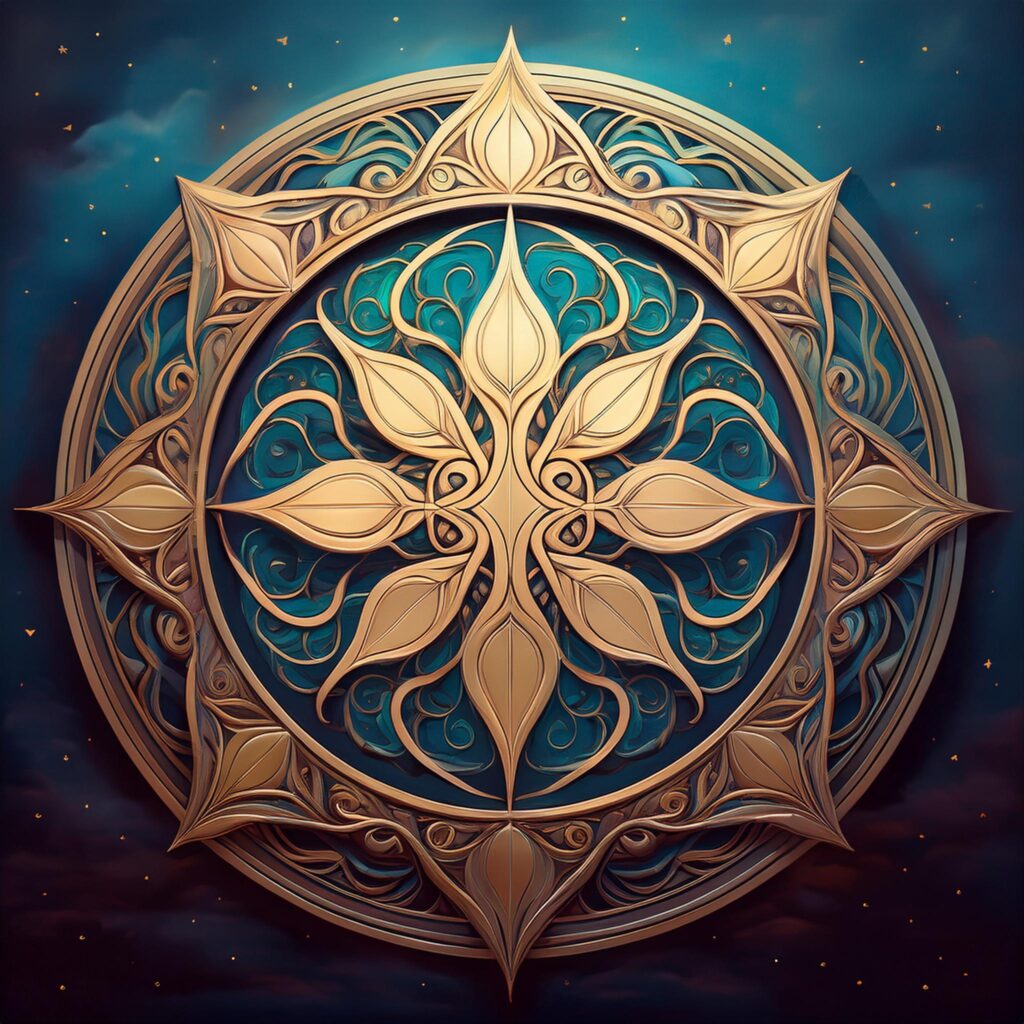
Symbols have always held a significant place in human culture, serving as a bridge between abstract concepts and tangible representation. Among these, the symbols of hope stand out for their universal appeal and deep emotional resonance. Across different eras and societies, hope has been a source of strength and a catalyst for resilience, often represented through a variety of symbols that capture its enduring essence.
One of the most powerful symbols of hope is the phoenix, a mythical bird known for its ability to rise from its own ashes. This powerful image represents renewal, rebirth, and the triumph of life over death. When asked what does phoenix symbolize, the answer is clear: it embodies the eternal cycle of hope, where even in the face of destruction, the promise of a new beginning remains.
The concept of hope is multifaceted, encompassing aspirations, dreams, and the belief in positive outcomes despite adversity. To express this profound emotion, cultures around the world have turned to symbols—powerful images and objects that convey the promise of hope. These symbols often transcend language barriers, offering a shared understanding that connects people regardless of their background.
The importance of symbols of hope lies in their ability to inspire and comfort, providing a sense of optimism and direction during challenging times. Whether rooted in mythology, religion, or cultural traditions, these symbols encapsulate the enduring human spirit that refuses to surrender in the face of difficulty. They remind us that even in the darkest moments, hope persists, guiding us towards a brighter future.
In this section, we will explore some of the most iconic symbols of hope, tracing their origins, meanings, and the ways in which they continue to influence modern interpretations of hope. From the phoenix rising from its ashes to the steadfast anchor of Christian tradition, each symbol offers a unique perspective on the powerful and universal emotion of hope.
Historical Symbols of Hope
Throughout history, symbols of hope have emerged in various cultures, often reflecting the collective aspirations and resilience of people facing challenges. These symbols, deeply rooted in myth, religion, and tradition, have served as beacons of optimism, reminding individuals and communities alike of the possibility of renewal and a brighter future.
One of the most ancient and enduring symbols of hope is the phoenix, a mythical bird from Greek mythology that cyclically regenerates or is reborn from its ashes. The phoenix represents the idea of rebirth and eternal life, symbolizing the hope that no matter how dire the circumstances, renewal and a new beginning are always possible. This powerful symbol has transcended its original cultural context, becoming a universal representation of hope in the face of destruction and despair.
In early Christian tradition, the anchor became another prominent symbol of hope. During times of persecution, Christians adopted the anchor as a secret symbol of their faith, drawing on the imagery of an anchor securing a ship during storms. The anchor represented stability, safety, and hope in God’s promises, especially in turbulent times. It was often inscribed on tombs, conveying the hope of eternal life and the soul’s safe harbor after death.
The butterfly is another historical symbol of hope, particularly in Native American cultures. The transformation of the caterpillar into a butterfly represents the idea of profound change and the hope that comes with new beginnings. The butterfly’s delicate beauty and its emergence from the cocoon symbolize the journey from darkness into light, embodying the hope for transformation and the belief that something beautiful can emerge from even the most challenging situations.
In Norse mythology, the rainbow bridge or Bifröst was believed to connect the world of humans with the realm of the gods. This bridge represented hope, acting as a pathway between the mortal and divine, and symbolizing the connection between earthly struggles and heavenly salvation. The idea of a rainbow as a symbol of hope is also found in the Judeo-Christian tradition, where it signifies God’s promise to humanity after the Great Flood, offering reassurance and hope for the future.
These historical symbols of hope, whether drawn from myth, religion, or nature, continue to resonate with people today. They serve as powerful reminders that hope is a timeless and universal force, capable of inspiring individuals and communities to persevere and look forward to a better tomorrow.
Religious Symbols Representing Hope
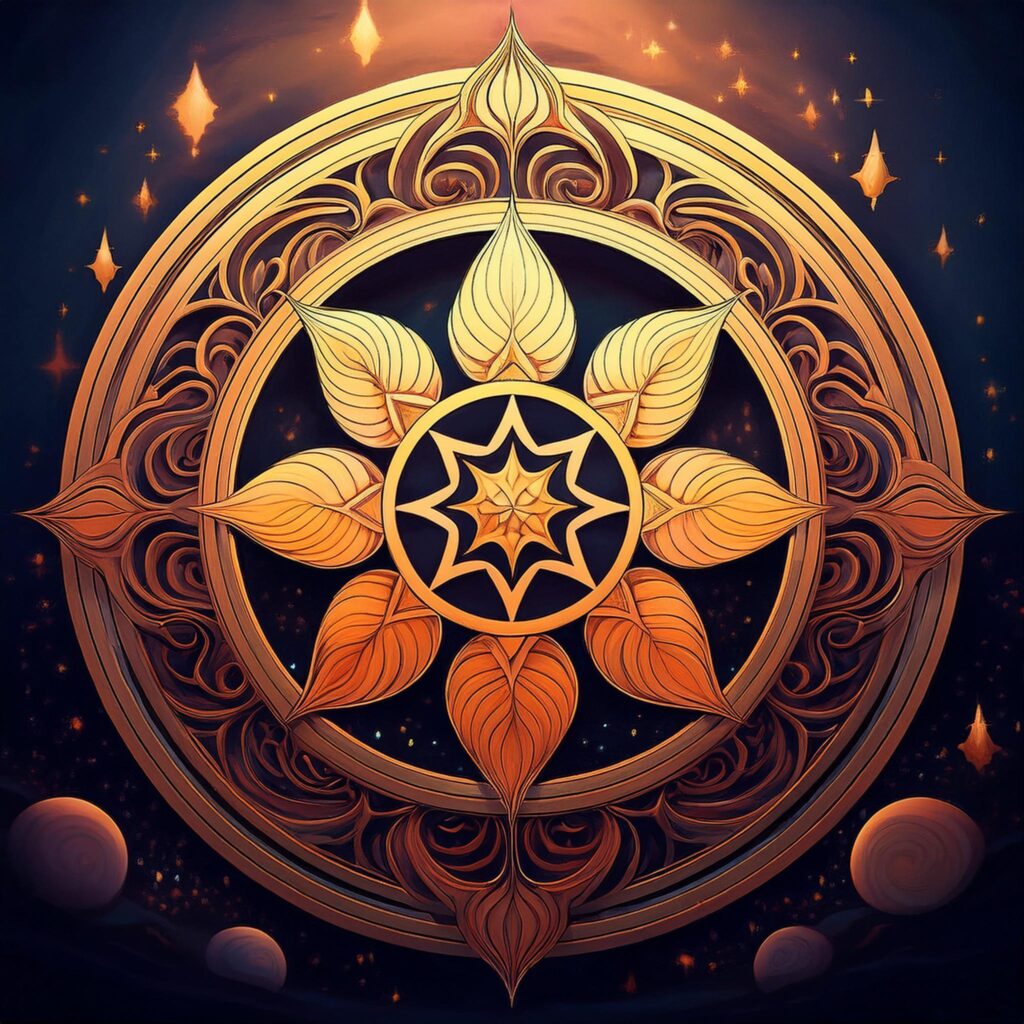
Throughout history, religious traditions have used symbols to convey deep spiritual truths and offer comfort during times of uncertainty. Among these, symbols of hope hold a special place, embodying the promise of redemption, renewal, and a brighter future. These symbols not only represent the hope inherent in faith but also serve as a reminder of divine guidance and protection.
One of the most significant religious symbols of hope in Christianity is the cross. While primarily associated with the crucifixion of Jesus Christ, the cross also symbolizes the hope of resurrection and eternal life. For Christians, the cross represents the triumph of life over death and the ultimate hope of salvation through Christ. It serves as a powerful reminder of God’s love and the promise of redemption, offering believers hope in even the darkest times.
In Judaism, the menorah—a seven-branched candelabrum—is a symbol of hope and light. Historically, the menorah represents the miracle of the oil during the rededication of the Holy Temple in Jerusalem, where a small amount of oil miraculously burned for eight days. This event, commemorated during Hanukkah, symbolizes the enduring hope that light will prevail over darkness, and that faith can sustain us through challenging times.
The lotus flower holds profound significance in Hinduism and Buddhism, symbolizing hope, purity, and spiritual awakening. In Hinduism, the lotus is associated with creation and the unfolding of the universe, representing the hope of spiritual growth and enlightenment. In Buddhism, the lotus flower’s journey from muddy waters to bloom in the sun is a metaphor for the path to enlightenment, symbolizing the hope that all beings can rise above suffering and achieve spiritual liberation.
The crescent moon and star is a symbol of hope in Islam, representing the light of guidance in the darkness of the night. The crescent moon, which marks the beginning of the Islamic lunar month, symbolizes renewal and the hope of new beginnings. The star, often seen alongside the crescent, signifies divine guidance, offering hope that believers will find their way through life’s challenges with the help of God’s wisdom.
In Sikhism, the khanda, a double-edged sword, symbolizes the hope for justice and the triumph of truth. It represents the dual nature of spiritual and temporal power, embodying the hope that righteousness will prevail over oppression. The khanda also reflects the Sikh belief in the oneness of God and the hope that this divine unity will lead to peace and harmony in the world.
These religious symbols, each rooted in rich spiritual traditions, offer believers a profound sense of hope. They remind us that faith is not just a belief system but a source of enduring hope that sustains and uplifts the human spirit in the face of life’s challenges.
Cultural Interpretations of Hope Symbols
Hope, a universal human experience, has been expressed and interpreted differently across various cultures. These cultural symbols of hope often reflect the unique values, beliefs, and experiences of the communities that created them, yet they all share a common thread—the aspiration for a better future and the resilience to pursue it. From nature-inspired symbols to those rooted in folklore and tradition, each culture offers its own distinctive representation of hope.
In Japanese culture, the crane is a powerful symbol of hope, longevity, and peace. The practice of folding 1,000 origami cranes, known as Senbazuru, has become a symbol of hope and healing. This tradition gained international recognition through the story of Sadako Sasaki, a young girl who folded cranes in hope of recovering from leukemia, a consequence of the Hiroshima bombing. The crane, in Japanese folklore, is believed to live for a thousand years, making it a potent emblem of long life and enduring hope.
In Native American cultures, the dreamcatcher is another symbol closely associated with hope. Traditionally made by weaving a web within a willow hoop, the dreamcatcher is believed to protect individuals from bad dreams while allowing good dreams to pass through. It symbolizes the hope for a peaceful and positive future, especially for children. Hanging above a bed, the dreamcatcher represents the belief that hope can filter out negativity, allowing only positive energy to influence one’s life.
The rainbow is a symbol of hope in many cultures around the world. In Irish folklore, the end of the rainbow is believed to hide a pot of gold, guarded by a leprechaun, symbolizing the hope of finding wealth and good fortune. Similarly, in the Judeo-Christian tradition, the rainbow represents God’s promise to Noah after the flood, symbolizing hope for the future and the covenant between God and humanity.
In Chinese culture, the peony flower is often associated with hope, prosperity, and honor. Known as the “king of flowers,” the peony’s lush, full blossoms represent the hope for a prosperous life filled with wealth and success. This flower is frequently featured in art and literature, symbolizing not just material wealth but also the hope for a harmonious and fulfilling life.
The pomegranate is another culturally significant symbol of hope, particularly in Middle Eastern and Mediterranean cultures. In ancient Greece, the pomegranate was associated with the myth of Persephone and her return to the earth, symbolizing the hope of spring and the renewal of life after the barren winter. In Jewish tradition, the pomegranate, with its many seeds, represents hope, fertility, and the potential for a fruitful future.
In African cultures, the baobab tree, often called the “tree of life,” symbolizes hope and resilience. The baobab can store large amounts of water in its trunk, enabling it to survive in harsh, dry environments. For many African communities, the baobab is a symbol of hope, providing food, water, and shelter even in the most challenging conditions. It embodies the belief that hope can sustain life and that resilience can help overcome adversity.
These cultural symbols of hope, diverse in their forms and meanings, demonstrate the universal human desire to find light in the darkness and to believe in the possibility of a better tomorrow. While each culture may express hope differently, the underlying message remains the same: hope is a powerful force that can inspire, uplift, and guide us through life’s challenges.
Modern Symbols of Hope

In today’s world, the symbols of hope have evolved to reflect contemporary struggles, values, and aspirations. While rooted in the timeless human desire for a better future, these modern symbols often emerge in response to global challenges, social movements, and the collective experience of societies in the 21st century. They are designed not only to inspire hope but also to unite and mobilize people towards common causes.
One of the most recognizable modern symbols of hope is the ribbon, used in various colors to represent different causes. The pink ribbon, for example, is a global symbol of hope in the fight against breast cancer. First introduced in the early 1990s, the pink ribbon has become synonymous with breast cancer awareness and the hope for a cure. It represents solidarity, support, and the belief that through collective effort, progress can be made against the disease.
The peace sign, originally designed in the late 1950s as a symbol for nuclear disarmament, has become a broader symbol of hope for peace in the world. Its simple, iconic design—a circle with three lines—has transcended its original context to represent hope for non-violence, unity, and global harmony. The peace sign continues to be a powerful emblem at protests and rallies, symbolizing the hope that humanity can overcome conflict through peaceful means.
Another prominent modern symbol of hope is the rainbow flag, which represents LGBTQ+ pride and the hope for equality and acceptance. First flown in 1978, the rainbow flag has since become an international symbol of hope for the LGBTQ+ community. Each color of the flag represents a different aspect of the community’s aspirations, from life and healing to spirit and harmony. The flag is a powerful reminder of the ongoing struggle for rights and the hope that one day all people will be treated with dignity and respect.
The green ribbon is another modern symbol of hope, particularly associated with mental health awareness. It represents the hope for a future where mental health is understood, respected, and treated with the same importance as physical health. The green ribbon is used to promote awareness, reduce stigma, and encourage individuals to seek help, embodying the hope for a world where mental wellness is prioritized and supported.
In environmental movements, the earth symbol—a simple representation of the planet—has become a symbol of hope for a sustainable future. Often depicted as a green and blue globe, it represents the hope that humanity can work together to protect the environment and ensure the survival of our planet. This symbol is widely used in campaigns and organizations dedicated to combating climate change, preserving natural resources, and promoting eco-friendly practices.
The yellow heart emoji has also emerged as a modern digital symbol of hope, often used in social media to convey optimism, happiness, and support. In the age of digital communication, this simple symbol has become a quick and effective way to share hope and positivity with others, especially during challenging times. It represents the hope for brighter days ahead and the resilience of the human spirit in the face of adversity.
These modern symbols of hope reflect the issues and challenges of our time, yet they continue the age-old tradition of using imagery to convey deep emotions and aspirations. Whether through a ribbon, a flag, or a digital icon, these symbols serve as reminders that hope is not just an abstract concept but a tangible force that can inspire action, create change, and unite people across the world.
Psychological Significance of Hope Symbols
Hope is more than just a fleeting emotion; it is a fundamental psychological force that drives human behavior, resilience, and well-being. Symbols of hope, whether ancient or modern, play a crucial role in shaping our mental and emotional landscape, offering a sense of purpose and motivation during challenging times. The psychological significance of these symbols lies in their ability to encapsulate complex feelings and aspirations, providing individuals with a tangible connection to hope and the strength to persevere.
At its core, hope is linked to the belief that positive outcomes are possible, even in the face of adversity. This belief is essential for maintaining psychological resilience, the capacity to recover from setbacks and continue moving forward. Symbols of hope serve as visual reminders of this belief, reinforcing the idea that challenges can be overcome and that a better future is within reach. When individuals engage with these symbols—whether by wearing a ribbon, displaying a meaningful image, or carrying a personal token—they are actively nurturing their sense of hope, which can have a profound impact on their mental health.
One of the key psychological functions of hope symbols is their ability to reduce feelings of helplessness and despair. In difficult situations, people often feel overwhelmed by circumstances beyond their control. Hope symbols can counteract these feelings by providing a focal point for positive thinking and action. For example, during times of illness, the pink ribbon symbol associated with breast cancer awareness can remind patients and their loved ones of the ongoing efforts to find a cure and the collective hope shared by millions. This shared hope can alleviate the sense of isolation that often accompanies suffering, fostering a sense of community and support.
Symbols of hope also play a crucial role in goal-setting and motivation. When individuals set goals, they often rely on hope to envision a future where these goals are achieved. Symbols like the anchor, representing stability and perseverance, can serve as motivational tools, encouraging individuals to stay focused and committed to their objectives. This connection between hope and goal achievement is particularly important in therapeutic settings, where visual symbols are often used to help clients articulate their hopes and aspirations, providing a concrete representation of their desired outcomes.
Moreover, hope symbols can act as powerful coping mechanisms during times of crisis. The psychological concept of “symbolic resilience” refers to the way people use symbols to maintain hope and meaning in the face of trauma or loss. For instance, after the loss of a loved one, individuals might find solace in symbols like the butterfly, which represents transformation and the continuation of life. This symbolic connection can help them navigate their grief and find a sense of peace, knowing that hope persists even in the aftermath of tragedy.
In a broader societal context, symbols of hope can galvanize collective action and inspire social change. Movements that rally around symbols like the rainbow flag or the peace sign harness the psychological power of these images to unite people with a common purpose. The collective hope embodied by these symbols can motivate large groups to work together towards shared goals, whether it be advocating for equality, promoting peace, or protecting the environment. This shared sense of hope is a powerful psychological force that can drive societal progress and foster a sense of global solidarity.
Ultimately, the psychological significance of hope symbols lies in their ability to bridge the gap between abstract emotions and tangible action. By providing a visual representation of hope, these symbols help individuals and communities connect with their inner strength, sustain their optimism, and find the motivation to persevere. In a world where challenges are inevitable, symbols of hope serve as enduring reminders that, with hope, anything is possible.
How to Use Hope Symbols in Everyday Life
Incorporating hope symbols into daily life can be a powerful way to maintain a positive outlook, foster resilience, and inspire others. These symbols, which represent optimism, renewal, and perseverance, can serve as gentle reminders of the strength within us and the potential for brighter days ahead. Here are some practical ways to integrate hope symbols into your everyday routine, helping you stay connected to the uplifting power of hope.
1. Wearable Symbols of Hope
One of the simplest ways to keep hope close is by wearing symbols that resonate with you. This could be a piece of jewelry, like a pendant in the shape of an anchor or a butterfly, representing stability or transformation, respectively. Many people wear ribbons to show solidarity with causes close to their hearts, such as a pink ribbon for breast cancer awareness. These wearable symbols not only serve as personal reminders but also communicate your commitment to hope to those around you.
2. Home Decor and Artwork
Incorporating hope symbols into your living space can create an environment that fosters positivity and resilience. Consider adding artwork, posters, or wall hangings that feature symbols like the lotus flower, phoenix, or rainbow. These visuals can serve as focal points in your home, providing daily inspiration and a sense of calm. Even small items like a candleholder shaped like a lotus or a decorative pillow with a peace sign can subtly infuse your space with the essence of hope.
3. Personal Reflection and Meditation
Hope symbols can also be used during personal reflection or meditation practices. For instance, you might hold a small object, such as a stone engraved with a meaningful symbol, while meditating. Focusing on this symbol during your practice can help you cultivate a sense of hope and optimism. Some people also use symbols like the lotus or tree of life as focal points for visualization exercises, imagining themselves blossoming or growing stronger like the symbol they meditate upon.
4. Digital and Visual Reminders
In the digital age, it’s easy to keep hope symbols visible throughout your day. Set a background image on your phone or computer that features a symbol of hope, like a rising sun or a serene rainbow. These images can serve as quick, uplifting reminders whenever you glance at your screen. You can also use hope-themed emojis, such as the yellow heart or dove, in your texts and social media posts to spread positivity to others.
5. Journaling and Creative Expression
Integrating hope symbols into journaling or creative activities can reinforce a positive mindset. Try drawing or writing about symbols that represent hope to you, such as a tree growing in difficult soil or a star shining in the night sky. You might also create a vision board filled with images and symbols that represent your hopes and dreams, serving as a daily source of motivation and encouragement.
6. Gifting Hope to Others
Hope symbols make thoughtful gifts that can uplift and inspire others. Whether it’s a bracelet with an anchor charm, a framed piece of art featuring a crane, or a simple card with a message of hope, these symbols can bring comfort and encouragement to those going through tough times. By sharing these symbols, you not only offer hope but also strengthen your own connection to its power.
7. Community and Social Engagement
Engaging with hope symbols in community settings can amplify their impact. Participate in events that center around hope symbols, such as charity walks that use ribbons or community art projects that feature murals of hopeful imagery. These collective activities reinforce the shared nature of hope and can bring a community together in support of a common cause. Displaying hope symbols in public spaces, such as your workplace or local community center, can also spread positivity and remind others that they are not alone in their journey.
By integrating hope symbols into your daily life, you create constant, meaningful connections to the concept of hope. Whether through personal adornment, home decor, or social engagement, these symbols can help you maintain a hopeful outlook, inspire resilience, and encourage those around you to embrace the power of hope in their own lives.
Reader-Requested Symbols Related to Hope
Our exploration of hope would not be complete without considering the symbols that resonate deeply with our readers. Over time, many of you have shared personal stories, cultural insights, and unique symbols that embody hope in your lives. These reader-requested symbols add a rich, diverse perspective to our understanding of hope, demonstrating how this powerful emotion is represented in various traditions and personal experiences.
The White Dove
One of the most frequently requested symbols is the white dove. Across cultures and religions, the white dove is universally recognized as a symbol of peace and hope. In Christianity, it represents the Holy Spirit and the hope of salvation. In other contexts, such as peace movements, the white dove symbolizes the hope for an end to conflict and the possibility of a harmonious future. Readers have shared that the white dove, often depicted carrying an olive branch, reminds them of the enduring hope for global peace and personal tranquility.
The Green Shoot
Another symbol that many readers associate with hope is the green shoot, a tender sprout emerging from the earth. This symbol is particularly poignant in representing new beginnings and the resilience of life. Readers have described how the green shoot represents their hope during times of recovery or transition, signifying the potential for growth even after periods of difficulty. This symbol is especially meaningful in environmental contexts, where it embodies the hope for ecological renewal and the preservation of our planet.
The Star
The star is a timeless symbol of hope, often mentioned by readers as a guiding light during dark times. In many cultures, the star represents navigation, both literal and metaphorical, offering hope by guiding travelers through the night. Readers have shared personal stories of how a single star in the sky has provided them with a sense of direction and optimism, symbolizing the hope that even in the darkest moments, there is always a light to guide us forward.
The Hamsa Hand
Originating in the Middle East and North Africa, the Hamsa hand is another symbol that readers have requested we explore in the context of hope. The Hamsa, often depicted as a hand with an eye in the center, is believed to protect against evil and bring good fortune. For many, it represents the hope for protection and the courage to face challenges. Readers have noted that the Hamsa hand serves as a reminder to stay hopeful in the face of adversity, trusting that positive energy and good luck will prevail.
The Rising Sun
A symbol that resonates with readers across different cultures is the rising sun. This powerful image represents the hope that each new day brings, symbolizing renewal, potential, and the promise of a fresh start. Whether depicted in art, literature, or personal reflection, the rising sun is often seen as a metaphor for overcoming difficulties and embracing the possibilities of the future. Readers have expressed that this symbol inspires them to remain hopeful, no matter what challenges they face, knowing that each sunrise offers a new opportunity.
The Anchor
The anchor is another reader-favorite symbol of hope, particularly cherished for its representation of stability and steadfastness. Traditionally, the anchor has been a symbol of hope and security, especially in Christian symbolism, where it signifies hope in Christ and the steadfastness of faith. Readers have shared that the anchor helps them stay grounded during turbulent times, serving as a reminder that hope can provide the stability needed to weather any storm.
The Lighthouse
Lastly, many readers have connected with the lighthouse as a symbol of hope. Often situated in treacherous waters, the lighthouse stands as a beacon of safety and guidance, offering hope to those navigating difficult journeys. Readers have described the lighthouse as a powerful symbol of hope, representing the idea that even in the midst of life’s storms, there is always a guiding light to lead the way to safe harbor.
These reader-requested symbols highlight the diverse ways in which hope is understood and represented across different cultures and personal experiences. Each symbol, whether rooted in ancient tradition or modern interpretation, offers a unique perspective on hope, reflecting the universal human desire for a better and brighter future. As we continue to explore the concept of hope, we invite our readers to share more symbols that inspire them, further enriching our collective understanding of this powerful emotion.
Symbols Similar to Hope
In the realm of symbolism, hope is closely connected to a variety of other powerful concepts, such as faith, resilience, and renewal. These related symbols often overlap in meaning, embodying different aspects of the human spirit and its capacity to overcome adversity. Below is a table that highlights some of the symbols similar to hope, along with their meanings and cultural significance.
| Symbol | Meaning | Cultural Significance |
|---|---|---|
| Faith (Cross) | Represents faith, trust, and spiritual belief | The cross is a central symbol in Christianity, representing faith in Christ and the hope of salvation. It serves as a reminder of spiritual strength and guidance. |
| Resilience (Oak Tree) | Symbolizes strength, endurance, and resilience | The oak tree is revered in many cultures for its longevity and durability, representing the ability to withstand challenges and emerge stronger. |
| Renewal (Phoenix) | Embodies rebirth, renewal, and transformation | The phoenix, a mythical bird that rises from its ashes, is a powerful symbol of renewal and the hope for a fresh start after overcoming difficulties. |
| Courage (Lion) | Represents bravery, courage, and leadership | The lion is often associated with courage and leadership, symbolizing the inner strength needed to face fears and persevere in the face of adversity. |
| Love (Heart) | Signifies love, compassion, and emotional strength | The heart symbol is universally recognized as a representation of love and emotional resilience, often linked to the hope for meaningful connections and relationships. |
| Perseverance (Lotus Flower) | Symbolizes perseverance and spiritual enlightenment | The lotus flower, which blooms in muddy waters, is a symbol of perseverance and spiritual growth, representing the ability to rise above challenges and find inner peace. |
| Guidance (Star) | Represents guidance, navigation, and inspiration | The star, often used as a guiding light, symbolizes the hope for direction and clarity in life’s journey, helping individuals navigate through uncertainty. |
| Protection (Hamsa Hand) | Embodies protection, good fortune, and safety | The Hamsa hand is a symbol of protection and hope for safety, often believed to ward off evil and bring good luck, offering a sense of security and well-being. |
| Unity (Circle) | Represents unity, wholeness, and eternity | The circle is a symbol of unity and continuity, often representing the hope for a harmonious and interconnected world where all parts are in balance. |
| Peace (Olive Branch) | Signifies peace, reconciliation, and harmony | The olive branch is a classic symbol of peace, often associated with the hope for reconciliation and the end of conflict, promoting harmony and understanding. |
These symbols, while distinct from hope, share a deep connection to it, reflecting the various facets of human resilience and the enduring belief in a positive outcome. By understanding these related symbols, we gain a richer perspective on how hope manifests in different aspects of life, offering us multiple avenues to draw strength and inspiration.
Frequently Asked Questions about Hope Symbols
Hope symbols have been used across cultures and throughout history to represent optimism, renewal, and the human spirit’s ability to endure. Here, we address some of the most frequently asked questions about these powerful symbols.
The most universally recognized symbol of hope is the anchor. Historically, the anchor has been a symbol of safety and stability, often representing the idea of holding on through the storms of life. In Christian symbolism, the anchor is linked to the concept of hope in salvation and the steadfastness of faith. Its use as a symbol of hope has endured across centuries and continues to resonate in modern times.
The white dove is considered a symbol of hope primarily due to its association with peace and new beginnings. In the biblical story of Noah’s Ark, a dove returned to the ark carrying an olive branch, signaling the end of the flood and the return of dry land. This event has made the dove a symbol of hope for a peaceful future and the possibility of new life after hardship.
Yes, there are several modern symbols of hope that have emerged in recent times. For example, the pink ribbon is widely recognized as a symbol of hope in the fight against breast cancer, representing awareness, solidarity, and the hope for a cure. The rainbow flag, originally a symbol of LGBTQ+ pride, is also seen as a symbol of hope for equality and acceptance. Additionally, the yellow heart emoji has become a digital symbol of hope, often used to convey optimism and support in social media interactions.
There are many ways to incorporate hope symbols into your daily life. You can wear jewelry or clothing featuring symbols of hope, such as a necklace with an anchor pendant or a bracelet with a peace charm. Decorating your living space with artwork or objects that feature hope symbols, like a painting of a rising sun or a sculpture of a lotus flower, can also serve as daily reminders to stay positive. Additionally, you can use digital hope symbols, such as setting a starry sky as your phone background, to keep hope in sight throughout the day.
Yes, hope symbols are prevalent in various cultures around the world, often taking on unique forms that reflect local beliefs and traditions. For example, in Japanese culture, the crane is a symbol of hope and longevity, often folded into origami as a wish for peace and happiness. In Native American culture, the eagle is a symbol of hope, strength, and freedom, representing a connection to the spiritual world and the hope for guidance. These culturally specific symbols demonstrate the universal nature of hope while highlighting the diversity of its expression.
Hope symbols can indeed play a supportive role in mental health. By serving as tangible reminders of optimism and resilience, these symbols can help individuals focus on positive outcomes and maintain a hopeful outlook, even during challenging times. For instance, a person going through a difficult period might find comfort in wearing a symbol like the lotus flower, which represents overcoming adversity and finding peace. Incorporating hope symbols into mindfulness practices, such as meditation or journaling, can also enhance their positive impact on mental well-being.
The phoenix is a powerful symbol of hope, particularly in its representation of rebirth and renewal. In mythology, the phoenix is a bird that rises from its own ashes, symbolizing the ability to start anew after destruction or loss. This makes the phoenix an emblem of hope for those facing significant life changes or recovering from hardship, as it embodies the belief that it is possible to emerge stronger and more resilient after difficult experiences.

I’m the editor at SymbolsSays, where I explore the deeper meanings of symbols in mythology, art, literature, and psychology. My goal is to provide insights into how symbols influence our lives and connect us to our past.
